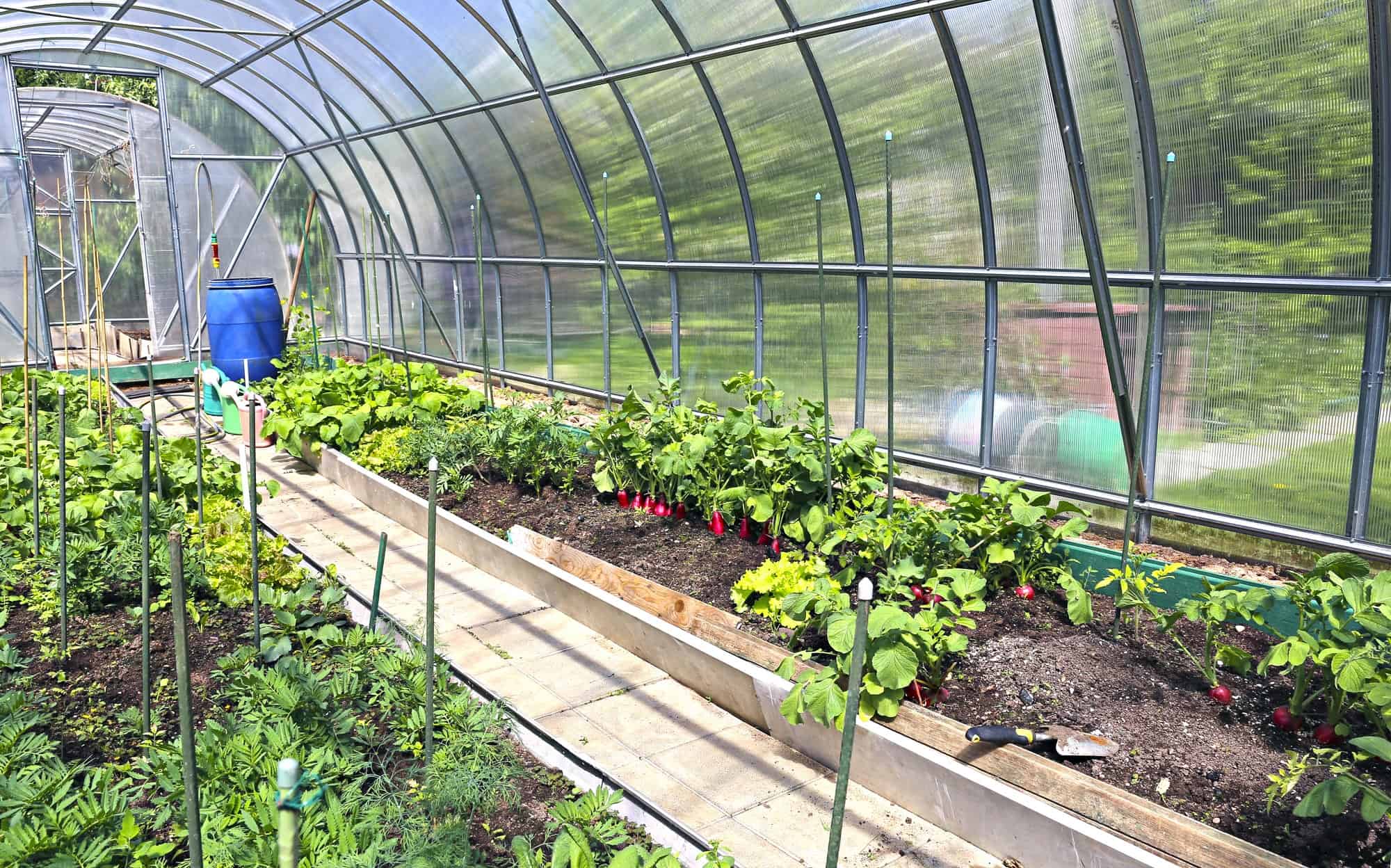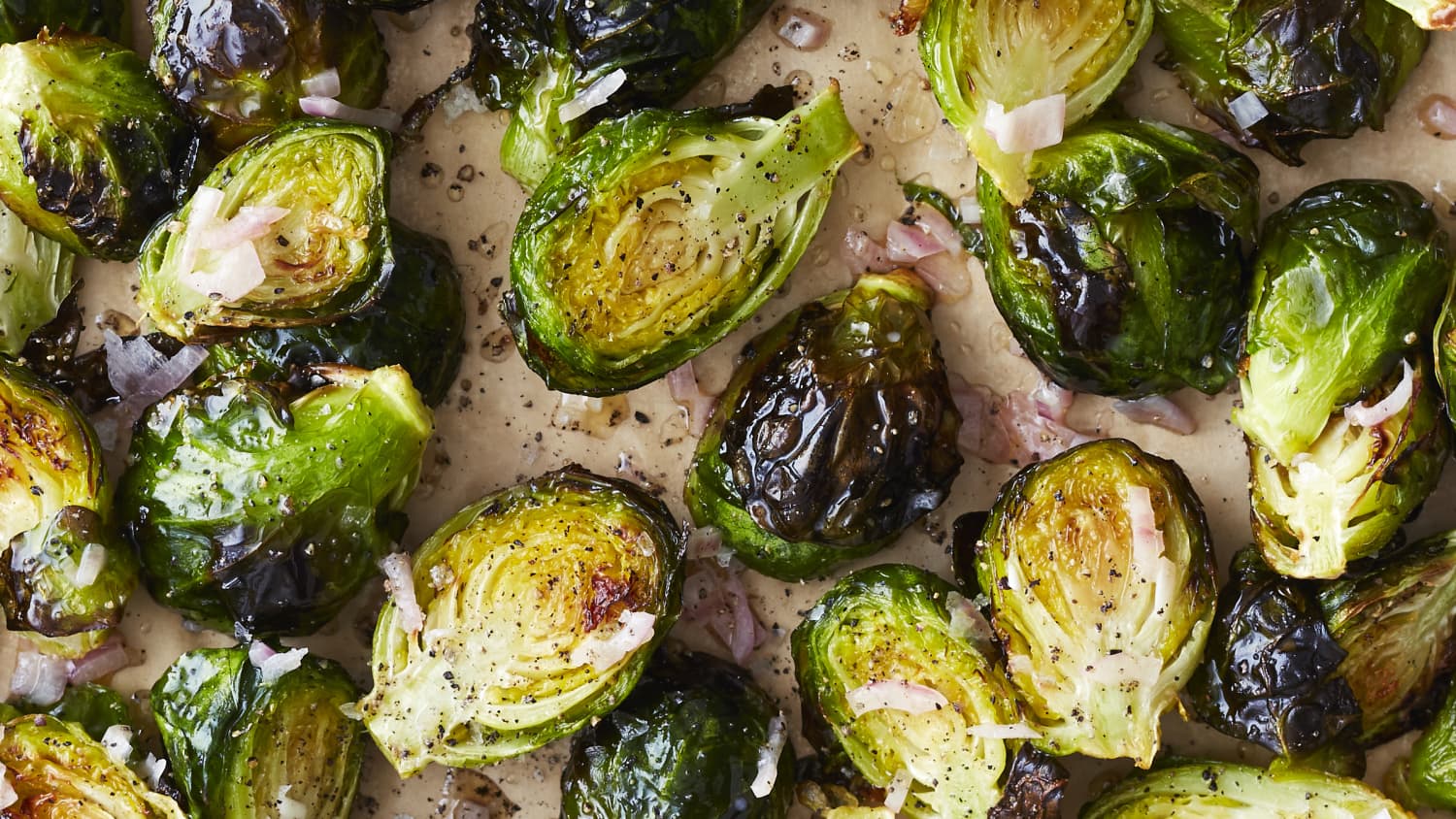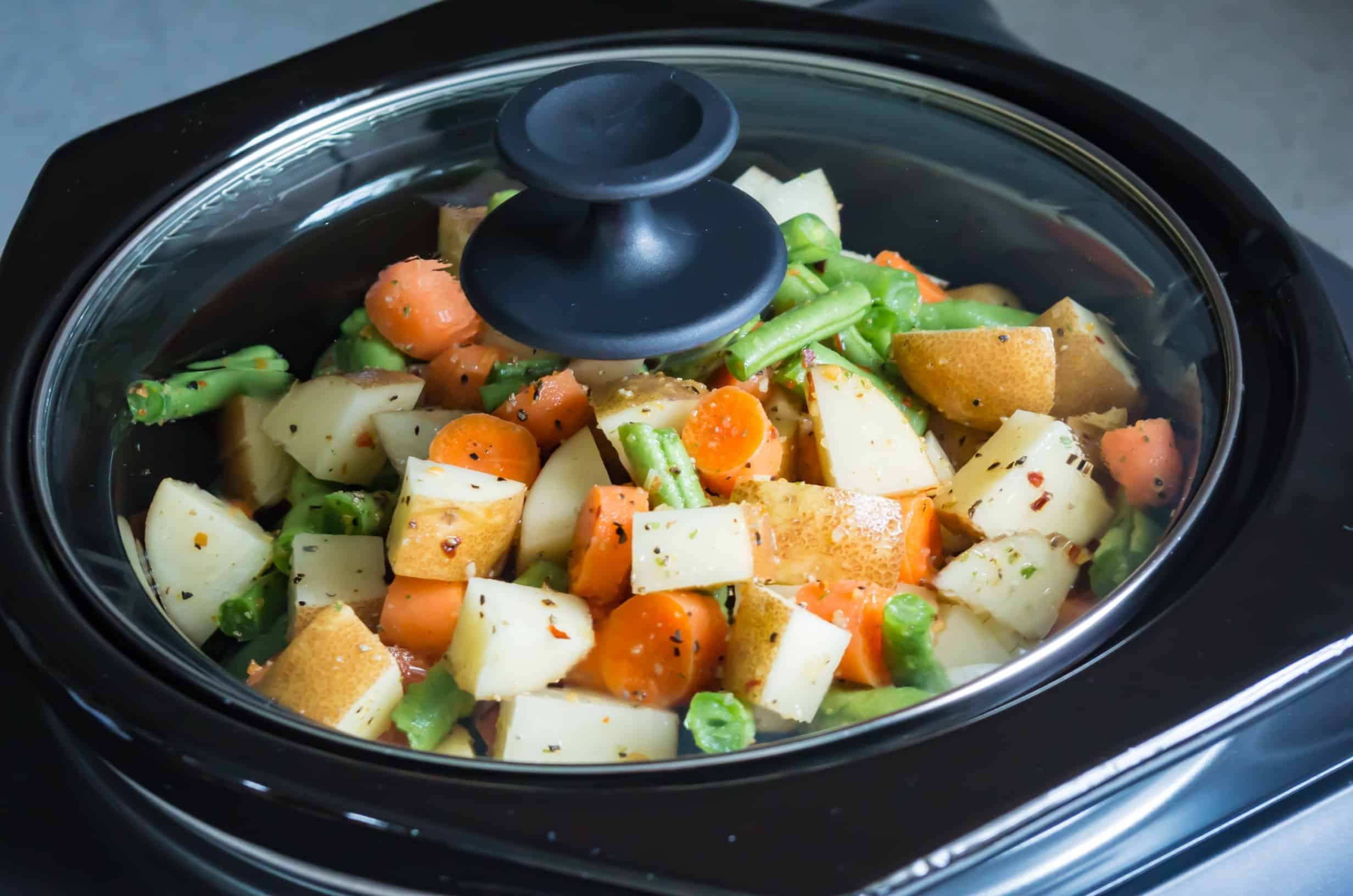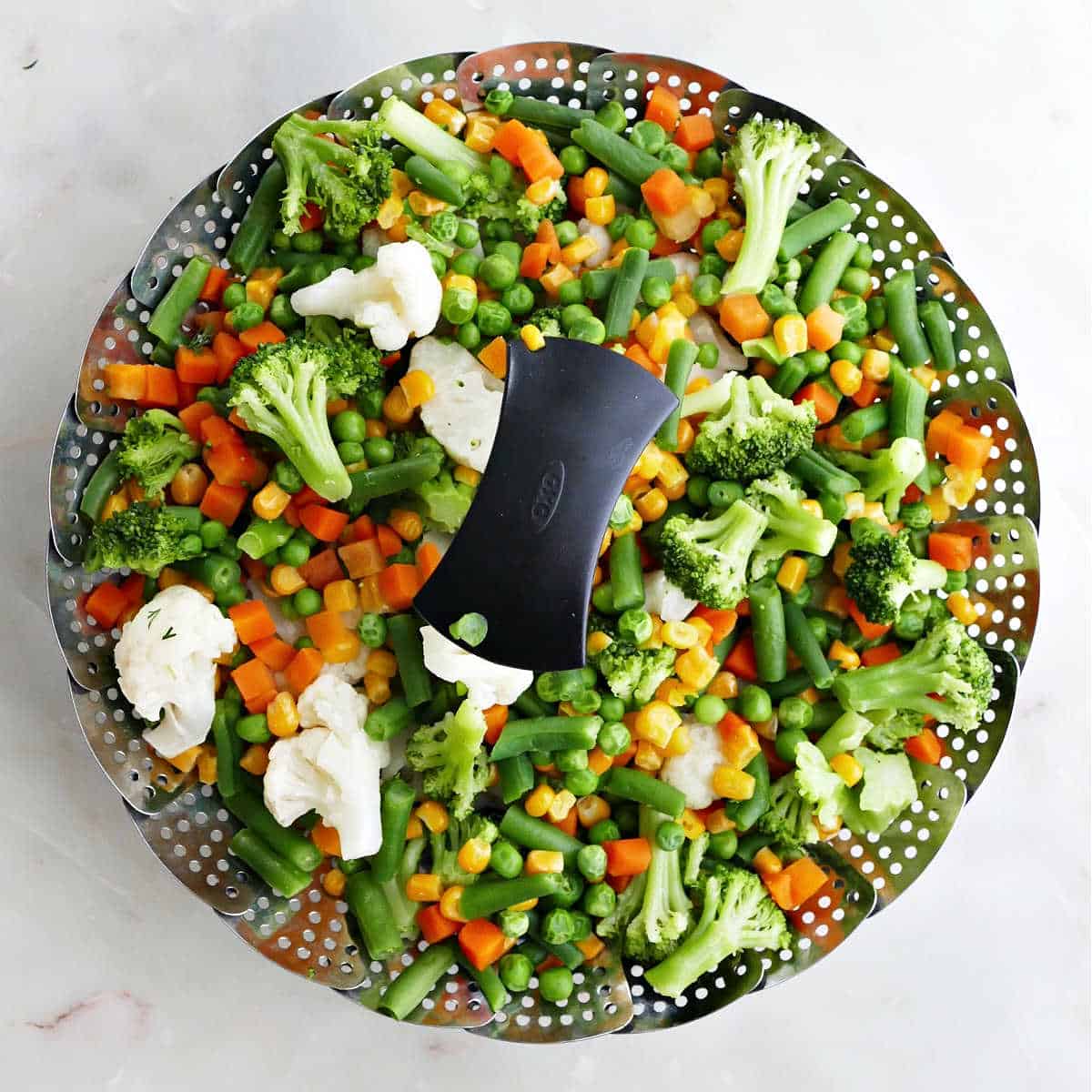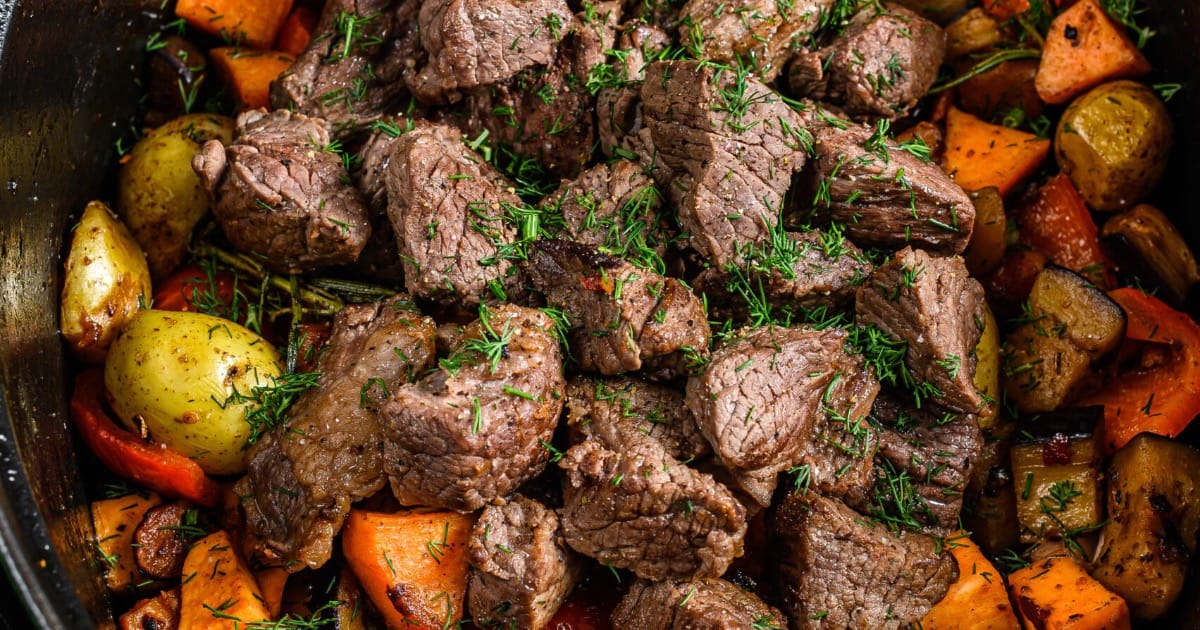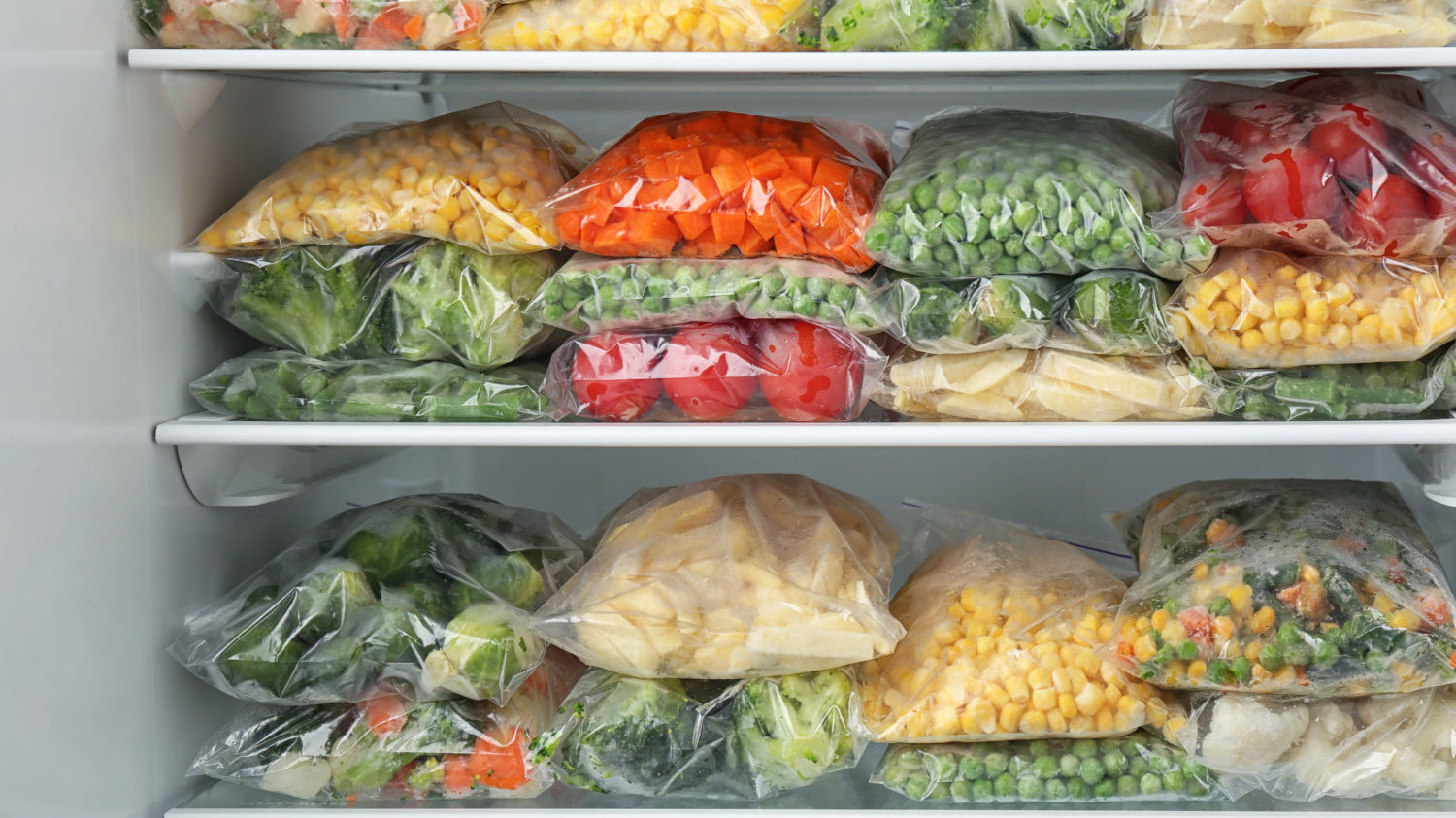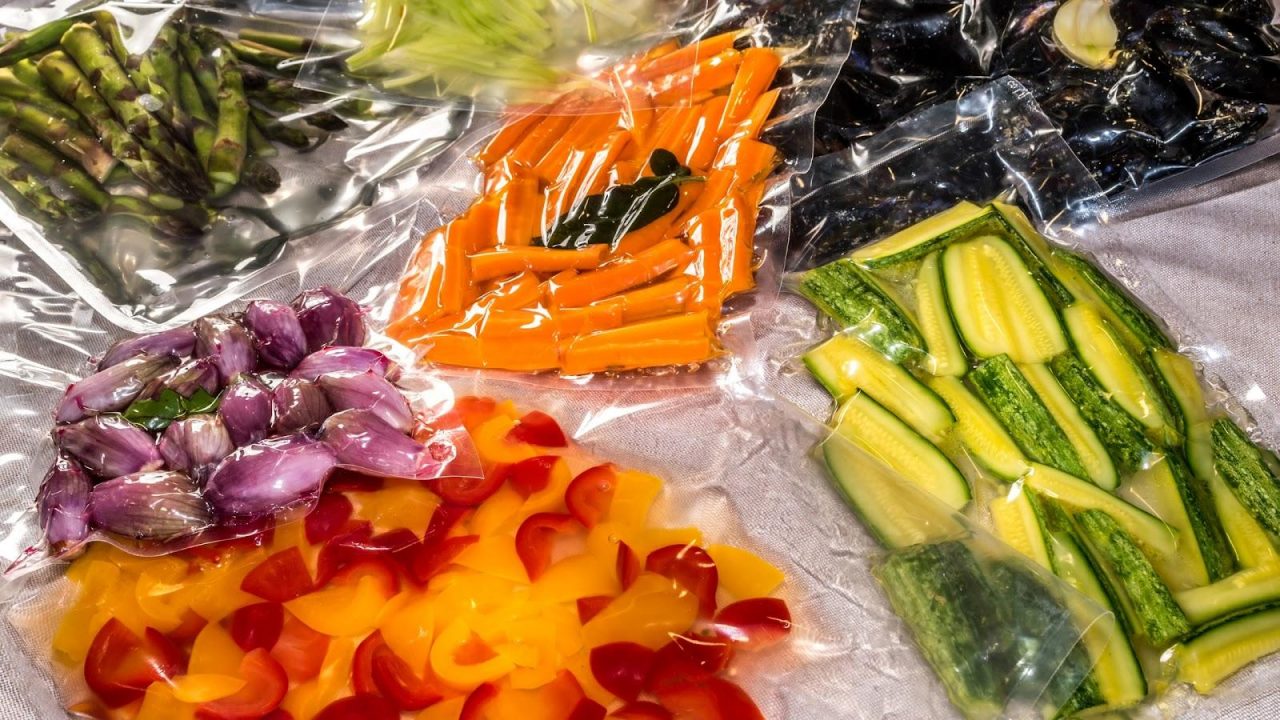Home>Gardening News and Trends>Latest News>How Long To Smoke Vegetables
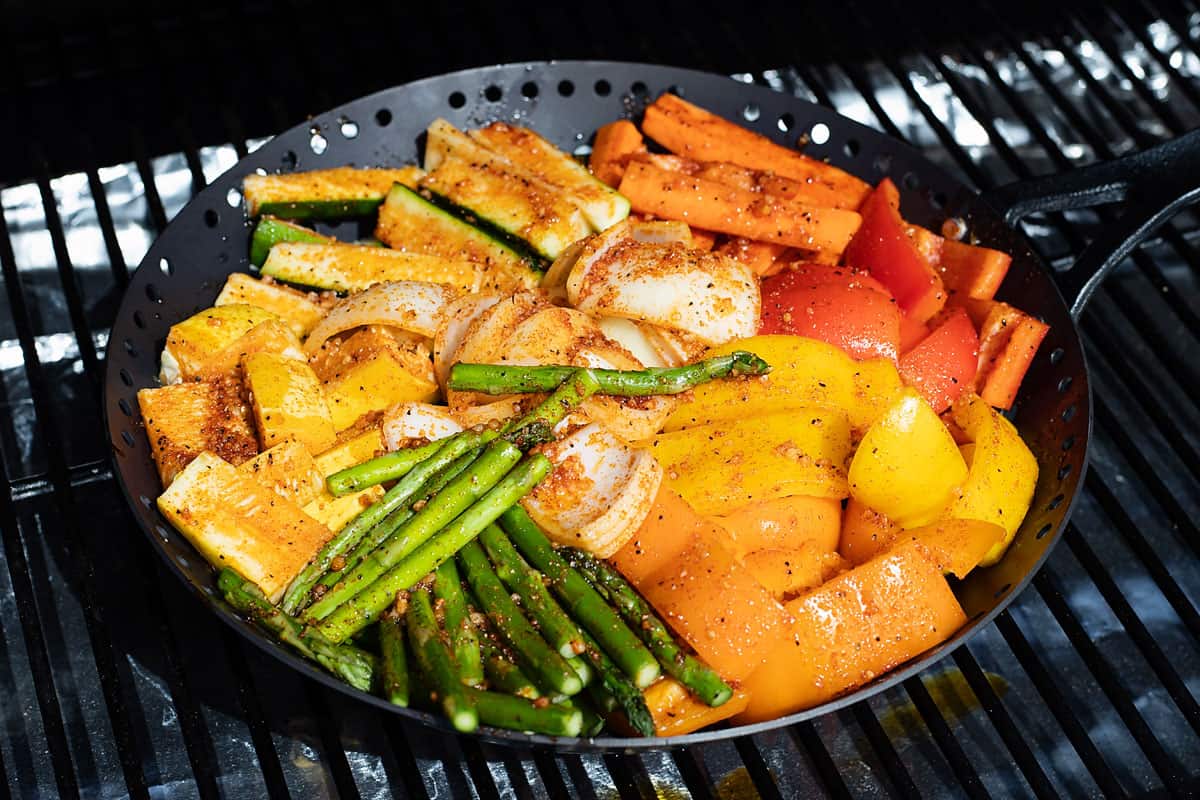

Latest News
How Long To Smoke Vegetables
Modified: January 22, 2024
Discover the latest news on how long to smoke vegetables and unlock the secret to achieving that perfect smoky flavor in your favorite dishes. Get expert tips and techniques now!
(Many of the links in this article redirect to a specific reviewed product. Your purchase of these products through affiliate links helps to generate commission for Chicagolandgardening.com, at no extra cost. Learn more)
Table of Contents
Introduction
Smoking vegetables might not be the first thing that comes to mind when you think about grilling or barbecuing, but it’s a technique that can elevate your veggie dishes to a whole new level. Smoking vegetables adds a unique smoky flavor and enhances their natural sweetness, making them irresistibly delicious. Whether you’re a vegetarian, a meat lover looking to incorporate more veggies into your diet, or just looking to experiment with new flavors, smoking vegetables is definitely worth a try.
Smoking is a cooking technique that involves slow-cooking food over indirect heat, usually with the addition of wood chips or pellets to generate smoke. This creates a distinct smoky flavor that infuses into the vegetables, creating a depth of taste that is simply unmatched. It’s a versatile method that can be used to smoke a variety of vegetables, from hearty root vegetables to delicate greens.
Not only does smoking vegetables add flavor, but it also helps to retain their nutritional value. Unlike boiling or steaming, which can cause nutrient loss, smoking vegetables allows them to retain more of their vitamins, minerals, and antioxidants. So not only will your smoked vegetables taste amazing, but they’ll also be packed with nutrients.
In this article, we will explore the benefits of smoking vegetables, provide tips on choosing the right vegetables for smoking, share techniques for preparing and smoking the vegetables, and provide recommended smoking times for different types of vegetables. By the end, you’ll be armed with all the information you need to start smoking vegetables and creating mouthwatering dishes that will impress your family and friends.
Benefits of Smoking Vegetables
Smoking vegetables offers numerous benefits, making it a desirable cooking method for both flavor enthusiasts and health-conscious individuals. Here are some of the key benefits of smoking vegetables:
- Enhanced flavor: Smoking vegetables imparts a rich, smoky flavor that elevates their taste to a whole new level. The smokiness adds a depth of flavor that pairs well with the natural sweetness of many vegetables, creating a delicious and satisfying dish.
- Nutrient retention: Unlike other cooking methods that may cause nutrient loss, smoking vegetables helps preserve their nutritional content. The slow and gentle cooking process allows the vegetables to retain more of their vitamins, minerals, and antioxidants, ensuring you receive the maximum nutritional benefits with every bite.
- Versatility: Smoking offers a versatile cooking technique for a wide variety of vegetables, from sturdy root vegetables like potatoes and carrots, to delicate greens like asparagus and zucchini. Whether you’re smoking a medley of vegetables or focusing on a single variety, the possibilities are endless.
- Texture enhancement: Smoking vegetables not only imparts flavor but also enhances their texture. The slow cooking process helps tenderize tougher vegetables, resulting in a melt-in-your-mouth consistency. It adds a pleasing smoky char to the exterior while maintaining a tender and juicy interior.
- Creative experimentation: Smoking vegetables allows for creative experimentation, enabling you to explore different flavor combinations and cooking techniques. You can mix and match vegetables, use different wood chips or pellets for varying smoky flavors, and even incorporate marinades or spice rubs to further enhance the taste.
- Appealing presentation: Smoked vegetables not only taste fantastic but also look visually stunning. The unique smoky char and vibrant colors make for an appetizing and eye-catching presentation, perfect for impressing guests at your next gathering or adding a touch of elegance to your everyday meals.
These benefits make smoking vegetables a worthwhile culinary adventure that can satisfy both your taste buds and your desire for nutritious meals. So why not give it a try and experience the deliciousness of smoked vegetables for yourself?
Choosing the Right Vegetables
When it comes to smoking vegetables, not all varieties are created equal. Some vegetables lend themselves better to the smoking process, as their texture and flavors are enhanced by the smoky cooking method. Here are some tips for choosing the right vegetables to smoke:
- Durable vegetables: Opt for vegetables that can withstand the longer cooking times and exposure to smoke. Sturdy vegetables like potatoes, sweet potatoes, and carrots are great options as they hold up well during the smoking process.
- Dense vegetables: Choose vegetables with a firm and dense texture, as they will hold their shape and texture better when smoked. Examples of dense vegetables include bell peppers, cauliflower, and broccoli.
- Naturally sweet vegetables: Vegetables with inherent sweetness tend to pair well with the smoky flavors of smoking. Sweet potatoes, corn, and butternut squash are excellent choices as they develop a caramelized sweetness when smoked.
- Robust-flavored vegetables: Consider vegetables with bold and robust flavors that can stand up to the smoky taste. Eggplant, onions, and mushrooms are great options as they absorb the smoky flavor and provide a delightful depth to the dish.
- Leafy greens: While delicate greens like lettuce and spinach are not suitable for smoking, heartier greens like kale, collard greens, and Swiss chard can be successfully smoked. They add a unique twist to traditional smoked vegetable dishes.
- Size matters: Keep in mind the size of the vegetables, as larger ones will require longer cooking times. If smoking smaller vegetables like cherry tomatoes or brussels sprouts, threading them onto skewers or using a grilling basket can make them easier to manage.
Ultimately, the choice of vegetables comes down to personal preference and experimentation. Don’t be afraid to try different vegetables and combinations to discover your favorite flavors. Remember to select fresh and high-quality produce for the best results. With these guidelines, you’ll be well on your way to selecting the perfect vegetables for your smoking adventures.
Preparing Vegetables for Smoking
Properly preparing your vegetables is crucial to ensure they are ready for the smoking process. Here are some essential steps to follow when preparing vegetables for smoking:
- Washing and drying: Start by washing your vegetables thoroughly under cold running water to remove any dirt or debris. Pat them dry with a clean kitchen towel or paper towels to remove excess moisture.
- Trimming and slicing: Trim off any stems, ends, or unwanted parts of the vegetables. For larger vegetables like zucchini or eggplant, slice them into uniform pieces to ensure even cooking and smoking.
- Marinating: While marinating is optional, it can add an extra layer of flavor to your vegetables. Prepare a marinade using your preferred ingredients, such as olive oil, herbs, spices, or citrus juice. Coat the vegetables in the marinade and let them sit for at least 30 minutes to allow the flavors to penetrate.
- Seasoning: Season the vegetables with salt, pepper, and any other desired spices just before smoking. This will enhance their taste and complement the smoky flavors.
- Preheating the smoker: Preheat your smoker to the desired temperature, usually between 225°F to 275°F (107°C to 135°C). Preheating ensures that the vegetables start smoking immediately and cook evenly.
- Adding wood chips or pellets: Select a type of wood that complements the flavor of your vegetables. Hardwoods like hickory, apple, or mesquite are popular choices. Soak the wood chips or pellets in water for about 30 minutes before adding them to the smoker. This helps create more smoke and prevent the chips from burning too quickly.
- Placing the vegetables: Arrange the vegetables on the cooking grates of your smoker, leaving some space between them for good airflow. If you’re smoking smaller vegetables like cherry tomatoes or sliced mushrooms, consider using a grilling basket or skewers to keep them from falling through the grates.
By following these steps, you’ll ensure that your vegetables are properly prepared and ready to be infused with smoky goodness. The preparation process sets the stage for a delicious and enjoyable smoking experience, resulting in perfectly cooked and flavorful vegetables.
Smoking Techniques for Vegetables
Smoking vegetables requires proper technique to ensure that they are cooked to perfection and infused with smoky flavors. Here are some key smoking techniques to consider when preparing vegetables:
- Direct smoking: Direct smoking involves placing the vegetables directly on the cooking grates of the smoker, allowing them to be exposed to the smoke and heat. This technique is ideal for larger vegetables or ones that benefit from a more intense smoky flavor.
- Indirect smoking: Indirect smoking involves placing the vegetables away from the heat source, either on a separate rack or in a dedicated smoker box. This method allows for a slower and more gentle smoking process, perfect for delicate vegetables or those that require longer cooking times.
- Temperature control: Maintaining a consistent temperature is crucial when smoking vegetables. Use a thermometer to monitor the temperature inside the smoker and make adjustments as needed to keep it within the optimal smoking range (usually between 225°F to 275°F or 107°C to 135°C).
- Smoke control: Controlling the amount and type of smoke is key to achieving the desired flavors. Avoid using too much wood or generating excessive smoke, as this can overpower the vegetables. Aim for a light and subtle smoky flavor that complements rather than overwhelms the natural taste of the vegetables.
- Adding moisture: Vegetables have a higher moisture content compared to meats, so adding moisture during the smoking process can help prevent them from drying out. Consider spraying the vegetables with water or placing a water-filled pan in the smoker to maintain a humid environment.
- Basting and glazing: Enhance the flavor of the smoked vegetables by basting them with your favorite sauce, glaze, or marinade during the cooking process. This adds another layer of taste and helps keep the vegetables moist.
- Monitoring cooking time: The cooking time for smoked vegetables can vary depending on their size, density, and desired level of doneness. Check the vegetables regularly and use a fork or skewer to test for doneness. The vegetables should be tender but still have a slight firmness to ensure they are not overcooked.
By employing these smoking techniques, you’ll be able to achieve perfectly smoked vegetables with a delightful balance of smoky flavors and tender textures. Experiment with different techniques and make adjustments based on your preferences to create unique and delicious smoked vegetable dishes.
Recommended Smoking Times for Different Vegetables
Each vegetable has its own recommended smoking time to achieve the perfect balance of tenderness and smoky flavor. While these times can vary depending on the size and thickness of the vegetables, here are some general guidelines to help you smoke different types of vegetables:
- Potatoes: Small whole potatoes or thick-cut potato wedges typically require around 1 to 1.5 hours of smoking time. Test for doneness by inserting a fork or skewer into the potatoes; they should be tender all the way through.
- Sweet potatoes: Whole sweet potatoes can take approximately 1.5 to 2 hours to smoke. If you prefer mashed or softer sweet potatoes, you can peel and cube them before smoking for about 30 to 45 minutes.
- Carrots: Medium-sized carrots will require around 45 minutes to 1 hour of smoking time. They should be fork-tender but still retain a slight bite.
- Bell peppers: Halved or quartered bell peppers generally need 30 to 45 minutes of smoking time. The skin should be slightly charred, and the flesh should be soft and slightly smoky.
- Zucchini and squash: Sliced or halved zucchini and squash usually take approximately 30 minutes to 45 minutes to smoke. They should be tender but still have a slight crispness to them.
- Tomatoes: Cherry tomatoes or small grape tomatoes can be smoked for around 20 to 30 minutes, while larger slicing tomatoes might need 30 to 45 minutes. The tomatoes should be softened and have a subtle smoky flavor.
- Mushrooms: Whole mushrooms or mushroom caps generally require 30 to 45 minutes of smoking time. They should be softened and have absorbed the smoky flavors.
- Broccoli and cauliflower: Florets of broccoli and cauliflower can be smoked for about 30 to 45 minutes. They should be tender and have a slight char on the edges.
- Asparagus: Thick asparagus spears may need 15 to 20 minutes of smoking time, while thinner spears might only require 10 to 15 minutes. The asparagus should be tender but still have a slight crispness.
Remember that these are just approximate times, and it’s important to monitor the vegetables during the smoking process. Test for doneness by checking the tenderness and texture of the vegetables with a fork or skewer. Adjust the smoking time based on your preferences and the specific characteristics of the vegetables you’re smoking.
By following these recommended smoking times, you’ll be well on your way to creating perfectly smoked vegetables with delightful flavors and textures that will impress everyone at the table.
Testing for Doneness
Testing for doneness is a crucial step when smoking vegetables to ensure they are cooked to perfection. While specific cooking times can provide a general guideline, the best way to determine if your vegetables are done is by using a combination of visual and texture cues. Here are some methods to test for doneness:
- Visual cues: Look for visual indicators that the vegetables are cooked. They should have a slight char on the outside, indicating that they have been exposed to the smoke and heat. The color of the vegetables may deepen or become more vibrant as they cook.
- Fork or skewer test: Insert a fork or skewer into the thickest part of the vegetable. The fork should easily slide in with little resistance, indicating that the vegetable is tender. For denser vegetables like potatoes or carrots, they should be fully cooked and soft when pierced.
- Bite or taste test: Take a small bite of the vegetable to assess its texture and flavor. It should be tender, yet still have a slight bite or crispness, depending on its original texture. The vegetable should have absorbed the smoky flavors and taste delicious.
- Internal temperature: If you prefer a more precise method, you can use an instant-read thermometer to check the internal temperature of thicker or larger vegetables. The vegetables should reach an internal temperature of around 190°F to 200°F (88°C to 93°C) for optimum tenderness.
- Experience and personal preference: Over time, you’ll develop a sense of doneness based on your experience and personal preference. You may prefer your vegetables to be firmer or softer, and this will guide your smoking times and testing methods.
It’s important to note that vegetables can continue to cook even after they’re removed from the smoker due to residual heat. Keep this in mind and slightly undercook the vegetables if you want them to retain a firmer texture.
By utilizing these testing methods and taking into account your preference for texture and flavor, you’ll be able to determine the perfect level of doneness for your smoked vegetables. Practice and experimentation will help you develop your own techniques for achieving the best results with each batch you smoke.
Serving and Enjoying Smoked Vegetables
Once your vegetables are smoked to perfection, it’s time to serve and enjoy them. Here are some tips to help you make the most out of your smoked vegetables:
- Pairing and garnishing: Consider pairing your smoked vegetables with complementary flavors and textures. For example, serve smoky grilled vegetables alongside a tangy yogurt dip or a zesty homemade salsa. Sprinkle fresh herbs, such as cilantro or parsley, over the vegetables for added freshness and visual appeal.
- Creating flavorful salads: Use your smoked vegetables as a base for hearty salads. Toss them with mixed greens, add some protein like grilled chicken or tofu, and drizzle with your favorite dressing for a wholesome and flavorful meal.
- Stuffing and filling: Stuff larger vegetables like bell peppers or zucchini with a mixture of cooked grains, cheese, and herbs, then finish them off on the grill for a delicious and filling meal. This adds another layer of flavor and texture to your smoked vegetables.
- Incorporating into pasta or grain dishes: Combine your smoked vegetables with cooked pasta or grains like quinoa or couscous to create satisfying one-pot meals. Toss them with a light olive oil-based dressing and add some grated Parmesan cheese for extra richness.
- Serving as a side dish: Pair your smoked vegetables with your favorite protein, such as grilled steak or seafood, for a complete meal. They also make a tasty and healthy side dish to accompany any main course.
- Using in wraps and sandwiches: Add a smoky twist to your wraps or sandwiches by layering in your smoked vegetables. Combine them with fresh greens, spreads, and condiments for a flavorful and satisfying handheld meal.
- Pureeing into dips and spreads: Transform your smoked vegetables into delicious dips and spreads. Blend them with herbs, spices, and creamy ingredients like Greek yogurt or tahini to create flavorful and versatile dip options.
- Freezing for later use: If you’ve smoked a larger quantity of vegetables than you can consume in one sitting, you can freeze them for later use. Simply let them cool completely, place them in airtight containers or freezer bags, and freeze. Thaw and reheat when you’re ready to enjoy them.
These serving suggestions allow you to incorporate your smoked vegetables into a variety of dishes and meals, adding depth and complexity to your culinary creations. Get creative, experiment with different flavors, and enjoy the smoky goodness of your tantalizing smoked vegetables.
Conclusion
Smoking vegetables is a fantastic way to elevate their flavors and create unique and delicious dishes. Not only does it infuse a delightful smoky taste, but it also helps to retain the nutritional benefits of the vegetables. Whether you’re a vegetarian looking for new ways to enjoy plant-based meals or a meat lover seeking to incorporate more vegetables into your diet, smoking vegetables is a culinary adventure worth exploring.
In this article, we’ve discussed the benefits of smoking vegetables, explored how to choose the right vegetables for smoking, provided tips on preparing and smoking vegetables, recommended smoking times for different vegetables, and covered testing for doneness. Armed with this knowledge, you have the tools to embark on your own smoking journey and create mouthwatering smoked vegetable dishes.
Remember to experiment with different vegetable varieties, seasonings, and smoking techniques to find your preferred flavors and textures. Whether you enjoy the smoky goodness of tender potatoes, charred bell peppers, or smoky grilled zucchini, the possibilities are endless.
Now it’s time to fire up your smoker, gather your favorite vegetables, and let the aroma of smoky goodness fill the air. Serve your smoked vegetables as a main course, side dish, or incorporate them into creative recipes. Enjoy the delicious flavors, the health benefits, and the satisfaction of cooking your very own smoked vegetables.
So why wait? Get ready to impress your taste buds and those of your family and friends with your newfound knowledge of smoking vegetables. Happy smoking!
